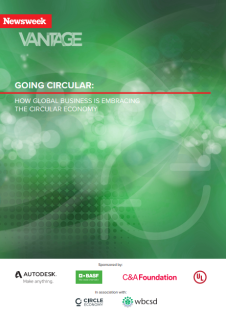
The circular economy’s central aim is to extend the life of all the goods and materials being bought, sold, used and discarded daily, throughout our societies, in order to curb extraction, pollution and waste. As such, it has come to be seen as a vital tool in the fight against environmental crises such as climate change, biodiversity loss, resource scarcity and pollution.
This report confirms that the concept of a circular economy has gone from relative obscurity to the corporate boardroom in just a few years. In an October 2018 survey of 317 senior executives from large corporations around the world, fully 98% were familiar with the concept. Thirty percent said their company had a circular strategy, and over three-quarters plan on adopting targets to make their products, processes or business models more circular in the coming five years.
The research—based on over 25 in-depth interviews with major companies, circular start-ups and other experts—indicates that companies are prioritizing the following strategies and business models:
